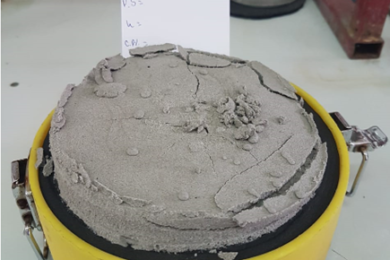Los Andes Copper has received results from the ongoing prefeasibility metallurgical study on its Vizcachitas copper project which, consistent with all prior test work conducted, confirms the adoption of dry stacked tailings at the Chile asset.
During 2020, Los Andes has continued metallurgical testing at the SGS laboratory in Santiago, Chile. The test work was carried out on representative samples from locked cycle flotation tailings that reproduce the expected particle size distribution for the coarse and fine tailings fractions at Vizcachitas, it explained.
The planned prefeasibility study (PFS) system for the water recovery is to use vacuum belts for the coarse tailings and pressure filters for the fine tailings. The filtration rates for coarse fraction vacuum filtration are between 1.8-2.0 t/h/sq.m and the fine fraction pressure filtration rates between 0.5-0.6 t/h/sq.m. The expected average filtered cake moisture is between 15-18%, confirming that the Vizcachitas ore is amenable to being filtered and dry stacked.
As the PFS advances, the decision to implement filtered tailings for dry stacking reflects the commitment of Vizcachitas to become one of the early adopters of the environmental friendly technology that will guide global mining in the future, Los Andes said.
Filtration reduces water consumption by 50% when compared with thickened tailings disposal alternatives (60-70% reduction when compared to traditional disposal alternatives), according to the company. Furthermore, filtered tailings can be handled by trucks, conveyors and shovels, as other solid bulk materials, eliminating the need for the construction and operation of a tailings dam.
“The latter is a milestone in operational flexibility and safety standards of particular relevance in a seismic country such as Chile,” the company said.
Fernando Porcile, Executive Chairman, said: “The verification that dry stacked filtered tailings is a viable option for Vizcachitas puts us on the forefront of environmentally responsible practices being adopted for the future of sustainable mining globally.
“Water conservation is high on the agenda for many mining companies, especially in Chile, and therefore the fact that we can reduce our water consumption by approximately 60-70% by using this method is a really positive development.
“This is a proven technology which is now being carried over into Tier One copper projects and I am excited that we will be one of the first, large scale, copper mines to utilise it.”










